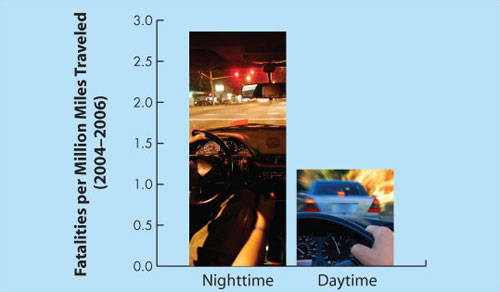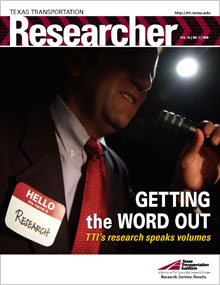TRB’s 18th Visibility Symposium encourages collaborative solutions
Seeing the road ahead is just about the most important requirement for driving safely. And just as importantly, a driver’s ability to process and understand what he or she sees is vital to maintaining a safe driving environment.
Since 1968, the Transportation Research Board (TRB) Visibility Symposium has united stakeholders in the transportation community—from researchers and practitioners to transportation agency personnel and industry professionals—to discuss the current state of the practice in visual communication of transportation information.
“Transportation professionals come from all over the world to learn from one another about the latest visibility concerns, discuss lessons learned through practice, and pose questions that have yet to be answered,” says Paul Carlson, research engineer and division head of the Texas Transportation Institute’s (TTI’s) Operations and Design Division. Carlson serves as chair of the TRB Committee on Signing and Marking Materials and was technical director for the 18th Biennial TRB Visibility Symposium hosted by TTI and held in College Station, Texas, on April 17-19, 2007. Nearly 80 professionals representing five countries participated in the 18th Visibility Symposium, which was sponsored by seven TRB research committees.
Despite the national emphasis on highway safety, crash rates are still staggering. In particular, nighttime crash rates are three times that of daytime rates. While there is general agreement that a reduction in the visibility associated with the roadside environment impacts the rate and severity of crashes, no definitive correlation between the two has yet to be established. Clarifying the relationship between those two factors is one of the symposium’s main missions. Sharing information among visibility experts can help reduce the number of nighttime crashes…and lives can potentially be saved.
Five technical sessions and 17 presentations covered topics such as roadway lighting, traffic control device design, pavement markings, pedestrian and roadway visibility, design and performance of road signs, and development of human factors guidelines for road systems.
“One thing we emphasized this year was demonstrating visibility challenges and new research technologies,” explains TTI Senior Research Scientist Sue Chrysler, who assisted Carlson in organizing the symposium. “We had our latest research equipment and technologies available for hands-on demonstrations. We also set up a work zone to show firsthand some of the visibility issues associated with lighting a nighttime work zone. TTI’s Proving Grounds Research Facility provided a perfect venue for this meeting.”
Technology demonstrations exemplify just how important the symposium’s organizers believe participant interaction is to the learning process. Similarly, the symposium’s structure provides a sparse agenda that encourages follow-up discussions and open communication between attendees.
“The extended conversations and technology demonstrations help participants to better understand the issues and challenges of visibility as related to nighttime crashes,” says Rich Cunard, TRB engineer of traffic and operations. “Without this symposium, research efforts would be less focused and solutions would undoubtedly be slower in coming.”

